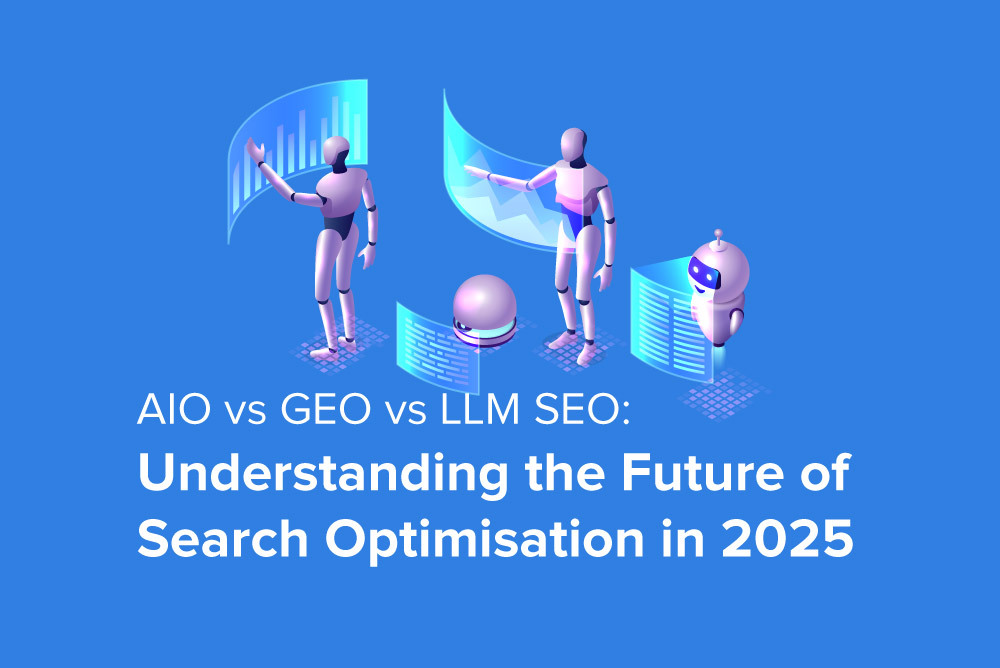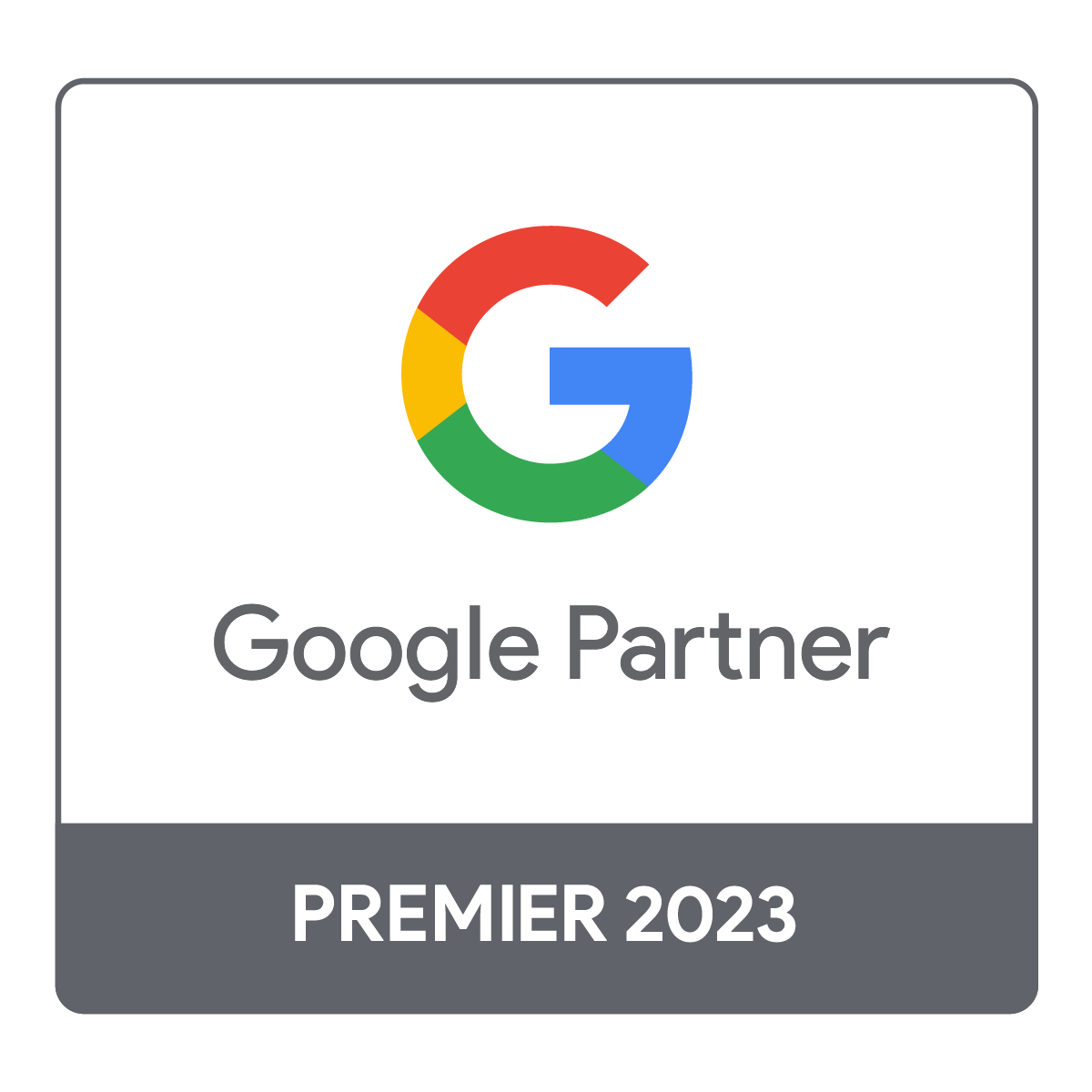AIO vs GEO vs LLM SEO: Understanding the Future of Search Optimisation in 2025
Key Takeaways
Essential Understanding: AIO, GEO, and LLM SEO represent evolved forms of traditional SEO adapted for AI-driven search systems. These approaches share 70-90% overlap with traditional SEO principles while targeting different AI platforms and use cases. Content quality, expertise demonstration, and trustworthiness remain fundamental across all optimisation approaches.
Core Differences: AIO targets all AI-powered systems broadly, including recommendation engines and automated curation. GEO focuses specifically on generative AI engines that produce conversational responses and summaries. LLM SEO optimises exclusively for large language models and their response generation mechanisms.
Implementation Priorities: Structured data and semantic markup remain crucial for AI content discovery and interpretation. Citation-worthy content with factual accuracy and expert authority increases AI reference likelihood. Conversational content patterns and natural language optimisation enhance LLM recognition and inclusion.
Success Measurement: Traditional metrics such as traffic and rankings must be supplemented with AI-specific indicators, including citations, mentions, and authority recognition. Brand mention tracking across AI platforms provides insights into optimisation effectiveness. Integrated measurement approaches correlate traditional SEO performance with AI citation rates.
Strategic Recommendations: Maintain traditional SEO fundamentals while implementing AI-specific optimisation tactics. Develop comprehensive content authority within specific expertise areas for maximum AI recognition. Prepare for continued convergence between traditional search and AI-driven information discovery systems.
Table of Contents
- The New Search Landscape
- What is AIO (Artificial Intelligence Optimisation)?
- What is GEO (Generative Engine Optimisation)?
- What is LLM SEO (Large Language Model SEO)?
- Key Differences Between AIO, GEO, and LLM SEO
- Similarities and Overlaps
- Implementation Strategies for Each Approach
- Measuring Success: KPIs and Metrics
- The Future of AI-Driven Search
- Frequently Asked Questions
The New Search Landscape
The digital marketing landscape is experiencing a fundamental transformation as artificial intelligence reshapes how users discover and consume information. Traditional search engine optimisation, once dominated by keyword density and backlink strategies, now faces new paradigms that prioritise AI-driven content discovery and generation.
According to recent research from Semrush, over 13% of Google searches in 2025 now trigger an AI Overview, representing more than double the share from earlier this year. This shift has given rise to three distinct but interconnected optimisation approaches: AIO (Artificial Intelligence Optimisation), GEO (Generative Engine Optimisation), and LLM SEO (Large Language Model SEO).
Understanding the distinctions and applications of these methodologies has become essential for businesses seeking to maintain visibility in an increasingly AI-centric search environment. This comprehensive analysis examines each approach, providing clarity on its unique characteristics while offering practical implementation strategies for modern digital marketing professionals. For businesses looking to implement these strategies, partnering with an experienced SEO agency can ensure effective execution across traditional and AI-driven optimisation approaches.
What is AIO (Artificial Intelligence Optimisation)?
Artificial Intelligence Optimisation represents a comprehensive approach to content and website optimisation designed to enhance visibility and performance across all AI-powered platforms and systems. AIO encompasses optimisation for machine learning algorithms, natural language processing systems, and automated content discovery mechanisms.
Core Components of AIO
AIO operates on several fundamental principles that distinguish it from traditional optimisation approaches. The methodology emphasises structured data implementation, semantic content organisation, and algorithmic comprehension enhancement. Content must be formatted in ways that AI systems can efficiently parse, understand, and utilise for various applications.
The approach extends beyond search engines to include AI-powered recommendation systems, chatbots, virtual assistants, and predictive analytics platforms. This broad scope requires content creators to consider how artificial intelligence systems interpret, categorise, and prioritise information across multiple contexts and applications.
AIO Implementation Strategies
Successful AIO implementation requires attention to machine-readable content structures, comprehensive metadata implementation, and semantic markup utilisation. Content must demonstrate clear topical authority while maintaining natural language patterns that AI systems recognise as high-quality and relevant.
Technical implementation includes schema markup optimisation, JSON-LD structured data, and API-friendly content formatting. These elements enable AI systems to extract relevant information efficiently while maintaining accuracy in automated content processing and distribution. Organisations requiring comprehensive technical optimisation may benefit from specialised enterprise SEO services that address these advanced requirements at scale.
What is GEO (Generative Engine Optimisation)?
Generative Engine Optimisation focuses specifically on optimising content for AI systems that generate responses, summaries, and answers directly for users. GEO targets platforms like ChatGPT, Google’s AI Overviews, Perplexity, and other generative AI search engines that provide conversational, AI-generated responses rather than traditional link-based results.
The GEO Methodology
GEO operates on the principle that content must be structured for citation and reference rather than click-through optimisation. Unlike traditional SEO, which aims for high search engine rankings, GEO seeks inclusion in AI-generated responses, summaries, and recommendations.
The methodology emphasises authoritative content creation, factual accuracy, and clear attribution markers that AI systems can identify and trust. Content must demonstrate expertise, experience, authoritativeness, and trustworthiness (E-E-A-T) to gain recognition from generative AI platforms. For businesses operating in specific geographic markets, combining GEO strategies with local SEO optimisation ensures visibility across both traditional and AI-driven local search results.
Key GEO Characteristics
Research from Princeton University demonstrates that generative engines prioritise content with clear definitions, structured headings, and easily extractable information. GEO content must be conversational in tone while maintaining factual precision and comprehensive coverage of topics.
Citation-worthy content typically includes specific data points, expert quotes, research references, and real-world examples that AI systems can verify and present as reliable information sources. The approach emphasises becoming a trusted source within AI training datasets and real-time information retrieval systems.
What is LLM SEO (Large Language Model SEO)?
Large Language Model SEO represents optimisation specifically targeted at large language models like GPT-4, Claude, Gemini, and similar AI systems. LLM SEO focuses on ensuring content appears in AI-generated responses when users query these systems directly for information.
Understanding LLM Processing
LLM SEO requires understanding how large language models process, interpret, and reference content. These systems utilise transformer architectures that analyse context, semantic relationships, and information hierarchies to determine relevant and trustworthy sources.
Content optimisation for LLMs emphasises natural language patterns, comprehensive topic coverage, and contextual relevance. The approach considers how these models tokenise text, establish word relationships, and predict information completeness when generating responses. Businesses utilising content management systems like WordPress can leverage specialised WordPress SEO services to ensure their platforms are optimised for both traditional search engines and large language models.
LLM SEO Best Practices
Effective LLM SEO implementation requires conversational content structures, comprehensive topic clusters, and authoritative source citations. Content must address user queries in natural language patterns while providing sufficient depth and context for AI systems to understand and reference accurately.
The methodology emphasises topical authority development, where content creators become recognised experts in specific subject areas through consistent, high-quality information production. This authority recognition increases the likelihood of LLM citation and reference in generated responses.

Key Differences Between AIO, GEO, and LLM SEO
While these three approaches share fundamental optimisation principles, distinct differences exist in their focus areas, target platforms, and success metrics.
Platform and Scope Differences
AIO represents the broadest approach, encompassing optimisation for all AI-powered systems, including recommendation engines, automated content curation, and predictive analytics platforms. GEO specifically targets generative AI engines that produce conversational responses and summaries. LLM SEO focuses exclusively on large language models and their response generation mechanisms.
The scope variation impacts content strategy and technical implementation requirements. AIO demands comprehensive, structured data and machine-readable formatting across multiple contexts. GEO emphasises citation-worthy content and conversational response optimisation. LLM SEO prioritises natural language processing optimisation and contextual understanding enhancement.
Success Metrics and Goals
Traditional SEO measures success through rankings, click-through rates, and website traffic generation. AIO expands these metrics to include AI system recognition, automated content distribution, and cross-platform visibility enhancement.
GEO success metrics focus on citation frequency, mention quality, and inclusion in AI-generated responses rather than direct traffic generation. The approach measures brand authority development and thought leadership establishment within AI-powered information systems.
LLM SEO evaluates success through response inclusion rates, contextual accuracy in AI references, and authority recognition within specific topic areas. These metrics emphasise influence and expertise demonstration rather than traditional traffic acquisition.
Content Structure Requirements
AIO requires highly structured content with comprehensive metadata, semantic markup, and machine-readable formatting across multiple content types and platforms. Content must be adaptable for various AI applications while maintaining human readability and engagement.
GEO content emphasises factual accuracy, expert authority, and clear attribution sources that AI systems can verify and cite confidently. The structure prioritises information extraction and summary generation while maintaining comprehensive coverage of topics.
LLM SEO content focuses on natural language patterns, conversational flow, and contextual completeness that large language models can process effectively. Content must provide sufficient context and depth for accurate interpretation and reference generation.
Similarities and Overlaps
Despite their distinct characteristics, AIO, GEO, and LLM SEO share substantial common ground with traditional SEO principles and with each other.
Shared Fundamental Principles
All three approaches emphasise high-quality content creation, authoritative source development, and user-focused information provision. The methodologies share requirements for expertise demonstration, trustworthiness establishment, and comprehensive topic coverage.
Technical implementation overlaps include structured data utilisation, semantic markup implementation, and crawlability optimisation. These shared elements ensure content accessibility across both traditional search engines and AI-powered systems.
Content Quality Standards
Research from industry leaders, including Ahrefs and Semrus,h indicates that content performing well in traditional SEO also demonstrates strong performance in AI-driven search systems. The overlap reaches approximately 87% between AI citation sources and top-ranking organic search results.
Quality indicators remain consistent across approaches, including factual accuracy, comprehensive coverage, expert authorship, and clear source attribution. These standards apply regardless of the target platform or optimisation methodology.
E-E-A-T Compliance
Experience, Expertise, Authoritativeness, and Trustworthiness remain crucial across all optimisation approaches. AI systems evaluate these signals when determining content reliability and citation worthiness, making E-E-A-T compliance essential for success in any AI-driven optimisation strategy.
The implementation of E-E-A-T principles requires consistent author credibility demonstration, factual verification, expert source citation, and transparent information sourcing across all content types and platforms.
Implementation Strategies for Each Approach
Successful implementation of AIO, GEO, and LLM SEO requires distinct tactical approaches while maintaining consistency with proven optimisation fundamentals.
AIO Implementation Framework
AIO implementation begins with a comprehensive, structured data audit and implementation across all website content. This includes schema markup for articles, products, organisations, and local business information to ensure AI systems can parse and categorise content accurately.
Content creation for AIO emphasises topic clustering around core expertise areas, with interconnected content pieces that demonstrate comprehensive knowledge and authority. Internal linking structures must support both human navigation and AI content discovery patterns.
Technical optimisation includes API-ready content formatting, machine-readable metadata implementation, and cross-platform content distribution preparation. These elements ensure content accessibility across various AI-powered platforms and applications.
GEO Optimisation Tactics
GEO implementation prioritises citation-worthy content creation with clear factual claims, expert source attribution, and verifiable data points. Content must include specific statistics, research references, and authoritative quotes that AI systems can extract and cite reliably.
Content structure for GEO emphasises question-and-answer formats, clear topic headings, and comprehensive coverage of user queries. The approach requires anticipating conversational search patterns and providing direct, accurate answers to common questions.
Brand mention optimisation becomes crucial for GEO success, as unlinked mentions carry more weight in AI citation decisions compared to traditional SEO backlink strategies. Building an authoritative presence across multiple platforms increases AI recognition and citation likelihood.
LLM SEO Best Practices
LLM SEO implementation focuses on natural language content creation that mirrors conversational patterns and user query structures. Content must address topics comprehensively while maintaining readable flow and contextual clarity.
Topic authority development requires consistent content production within specific expertise areas, establishing recognition as a trusted information source for large language models. This authority building increases citation probability and response inclusion rates.
Conversational content optimisation includes addressing long-tail query patterns, providing context-rich explanations, and maintaining natural language flow that LLMs can process and reference effectively in generated responses.

Measuring Success: KPIs and Metrics
Success measurement for AI-driven optimisation approaches requires new metrics beyond traditional SEO performance indicators.
Traditional vs. AI Optimisation Metrics
Traditional SEO metrics include organic traffic, keyword rankings, click-through rates, and conversion tracking. These metrics remain relevant but insufficient for comprehensive AI optimisation measurement.
AI optimisation metrics expand to include citation frequency tracking, brand mention monitoring across AI platforms, and authority recognition measurement within specific topic areas. These metrics focus on influence and expertise demonstration rather than direct traffic generation.
Platform-Specific Measurement
AIO success measurement requires tracking across multiple AI-powered platforms, including recommendation systems, automated content curation, and predictive analytics applications. Metrics include content distribution reach, AI system recognition rates, and cross-platform visibility enhancement. Organisations seeking to optimise mobile experiences should consider mobile SEO strategies as part of their comprehensive AIO implementation, given the increasing prevalence of mobile AI interactions.
GEO measurement focuses on citation tracking within AI-generated responses, mention quality assessment, and authority establishment within generative AI systems. Tools like Semrush’s Brand Monitoring and specialised AI citation tracking platforms provide relevant metrics.
LLM SEO measurement emphasises response inclusion rates, contextual accuracy in AI references, and authority recognition within large language model systems. These metrics require monitoring across multiple LLM platforms and query types.
Integrated Measurement Approaches
Comprehensive AI optimisation measurement requires integrated tracking that correlates traditional SEO performance with AI citation rates and brand mention frequency. This correlation helps identify content types and optimisation strategies that perform well across both traditional and AI-driven search systems.
Advanced measurement includes branded search correlation tracking, where AI mention increase correspond to branded search volume growth, indicating successful authority development and market recognition enhancement.
The Future of AI-Driven Search
The evolution of AI-driven search continues to accelerate, with significant implications for content optimisation strategies and digital marketing practices.
Emerging Trends and Technologies
Current trends indicate increasing integration between traditional search engines and AI-powered response generation. Google’s AI Overviews, Bing’s AI integration, and the growth of platforms like Perplexity demonstrate this convergence acceleration.
Voice search integration with AI systems creates new optimisation opportunities, focusing on conversational query patterns and natural language response generation. This integration requires content optimisation for both text and voice-based AI interactions.
Industry Predictions
Research from Semrush predicts that LLM traffic will completely overtake traditional Google search by 2027, representing a fundamental shift in information discovery patterns. This transition emphasises the importance of early AI optimisation adoption and strategy development.
The convergence of AIO, GEO, and LLM SEO approaches suggests eventual consolidation into comprehensive AI optimisation strategies that address multiple platforms and use cases simultaneously rather than targeting individual AI systems separately.
Strategic Preparation
Organisations preparing for AI-driven search dominance must develop integrated optimisation strategies that maintain traditional SEO effectiveness while building AI system recognition and authority. This dual approach ensures visibility across current and emerging search paradigms.
Investment in content authority development, technical optimisation for AI accessibility, and measurement system implementation provides competitive advantages as AI-driven search adoption accelerates across user demographics and use cases. For comprehensive guidance on developing effective optimisation strategies, businesses can reference detailed SEO strategy guides that address both traditional and emerging AI-driven search paradigms. Organisations operating e-commerce platforms should also consider specialised e-commerce SEO services to ensure their product pages and online stores remain visible across evolving search technologies.
Frequently Asked Questions
1. Are AIO, GEO, and LLM SEO completely different from traditional SEO?
No, these approaches represent evolutionary adaptations of traditional SEO principles rather than entirely new disciplines. Research from leading SEO authorities, including Ahrefs and Semrush, indicates that content performing well in traditional SEO also demonstrates strong performance in AI-driven systems, with overlap reaching approximately 87% between AI citation sources and top-ranking organic results. The fundamental principles of high-quality content creation, expertise demonstration, and trustworthiness establishment remain consistent across all approaches.
2. Which optimisation approach should I prioritise for my business?
The optimal approach depends on your target audience behaviour and business objectives. However, most experts recommend an integrated strategy that maintains traditional SEO effectiveness while implementing AI-specific optimisations. Companies with a strong local presence should emphasise GEO for local AI search visibility. B2B organisations with expertise-based content should prioritise LLM SEO for thought leadership establishment. Businesses seeking broad AI platform visibility should implement comprehensive AIO strategies.
3. How do I measure success in AI-driven optimisation compared to traditional SEO?
AI optimisation measurement requires expanded metrics beyond traditional SEO indicators. While organic traffic and keyword rankings remain relevant, success measurement must include citation frequency tracking, brand mention monitoring across AI platforms, and authority recognition within specific topic areas. Tools like Semrush’s Brand Monitoring, specialised AI citation tracking platforms, and Google Analytics 4, enhanced with AI interaction trackin,g provide comprehensive measurement capabilities.
4. Do I need different content strategies for each optimisation approach?
While distinct optimisation tactics exist for each approach, successful implementation relies on high-quality, authoritative content that serves multiple optimisation objectives simultaneously. Content should be structured with comprehensive topic coverage, clear factual claims, expert source attribution, and conversational language patterns. This integrated content approach ensures effectiveness across traditional search engines and various AI-powered platforms without requiring separate content creation efforts.
5. How will AI-driven search affect traditional SEO in the long term?
Industry research suggests convergence rather than replacement, with AI-driven search complementing traditional SEO rather than eliminating it. Semrush predictions indicate that LLM traffic will overtake traditional search by 2027, but this transition emphasises the importance of integrated optimisation strategies that maintain traditional SEO effectiveness while building AI system recognition. The most successful organisations will develop comprehensive approaches that ensure visibility across both current and emerging search paradigms.













